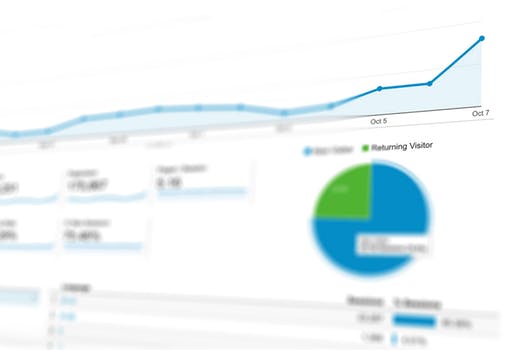What Every Advisor Ought to Know about Web Analytics
Monitoring the traffic to your website is a critical component to digital marketing success. Understanding the data can help you make adjustments and also help you determine whether the adjustments and changes you are making to your website are working. Even if you are not the one managing your website, you should still understand the basics of web analytics. This article will cover off 4 of the most basic metrics to help get you started.
Visits (also known as Sessions)
This is a rather straightforward metric. It is exactly as it reads and measures the number of times an individual visits your website. If the same individual visits your website, that also counts (note: there is another metric called Unique Visitors). While “visits” is a rather basic measurement it’s a quick and easy litmus test to gauge your website’s performance. If you’ve added new content your website, written a blog post, updated your LinkedIN profile with your website address or perhaps even just simply put it on your new business cards, “Visits” can give you some initial signs that those activities paid off.
Pages / Visit
Pages / Visit are one of many measurements of website engagement. When a visitor comes to your website, a visit is logged. However, once they are physically sitting on a page and they click to another page, one page is record as having been visited. A key success factor that any advisor should be aware of is the fact that the primary goal of any page on your site, is to encourage and incentivize the visitor to click again. That’s it. Pretty simple? Well, it makes total sense. If the content on your site is relevant and engaging enough to a visitor, of course they’re going want to read more and when they do that, so does their relationship with your website. What are the primary types of activities that will help increase this measurement? Simple, add more pages or write more blog posts!
Average Visit Duration
Akin to Pages / Visit, Average Visit Duration, is also a measurement of engagement. It helps you to better understand your visitor behaviour and should be viewed in the context of Pages / Visit. Why? Well, if a visitor comes to your website and clicks through 3 pages and spends a total of 1 minute per page reading your articles, that’s amazing! It means that time and time again, they were able to find what they were looking for. However, if a visitor comes to your website and clicks through 3 pages and stays on each page for only 5 seconds, that’s not good. It means they didn’t find what they were looking for and simply took off. Activities that can help boost this metric really revolves around content and volume of content (content being defined as text or copy, images, links or documents) or adding widgets like financial calculators beside relevant content (e.g. Savings calculator placed beside an articles about Savings and Retirement). The more content you have, the more keywords you’ll probably have, and the more chances visitors will find you through Google or Bing when they search for something. Little to no content on your website will lead to very low Average Visit Duration times since there’s literally nothing to read!
Bounce Rate
The last of the metrics for this article and likely one of the most important ones is Bounce Rate. A Bounce rate is yet another measurement of engagement. It indicates the percentage of people who enter your website and immediately leave after looking at only one page. Generally, a bounce rate lower than 40% is arguably better than a bounce rate higher than 40%. A great goal to strive for is to keep your website’s bounce rate lower than 50%. This means that 1 in 2 visitors don’t immediately leave and it also tells you whether you’ve achieved that one fundamental goal of encouraging and incentivizing the visitor to click to another page on your website. Some key activities that can help improve your bounce rates are adding more content (can you see a theme here?), putting content that catches your visitors attention on all of your pages or even adding more pages.
Understanding your website analytics is a critical aspect to owning a website and there are many tools out there that can help you acquire this type of important information. If you have a question about what you’ve read today or just simply have a question about anything Digital Marketing related, please get in touch with us!




